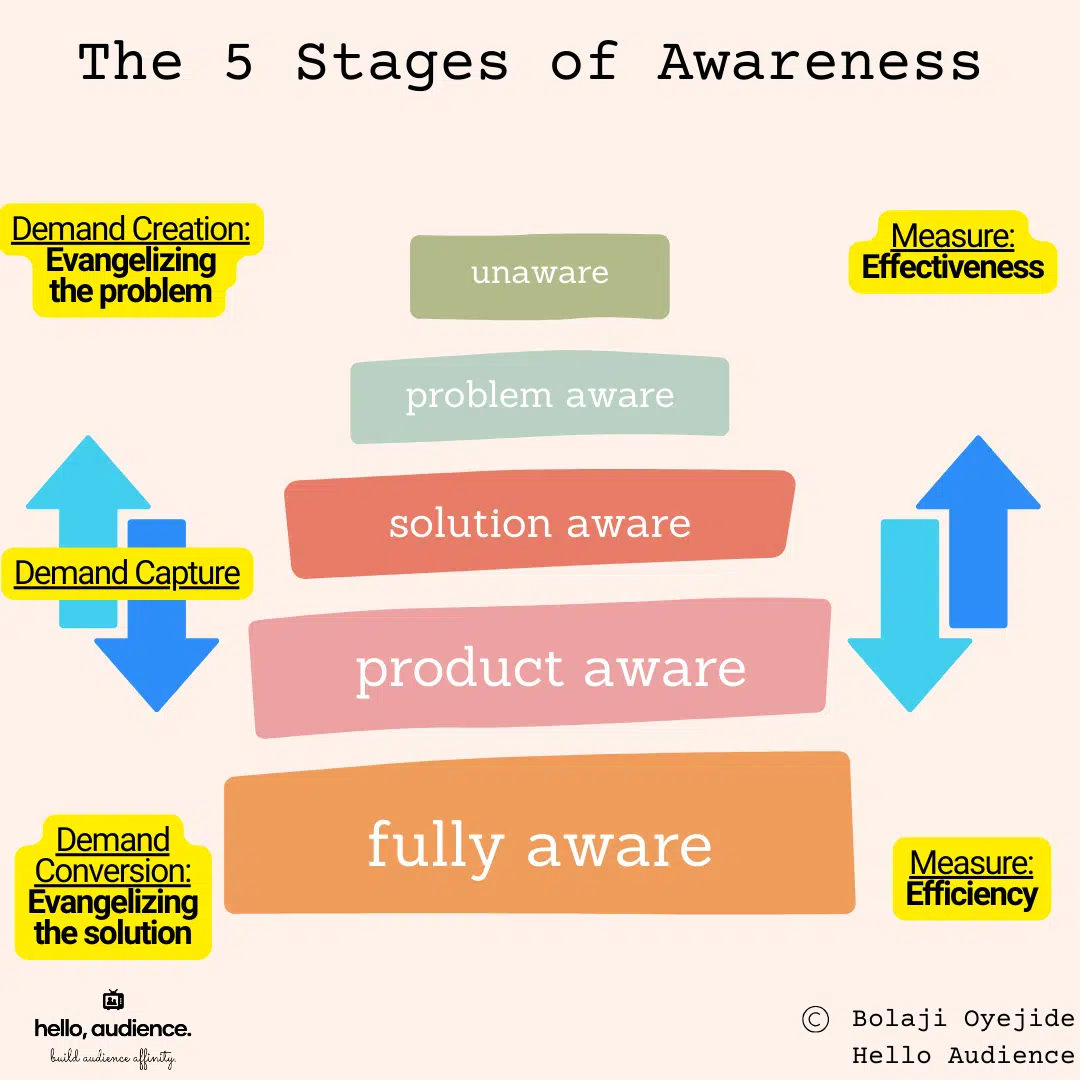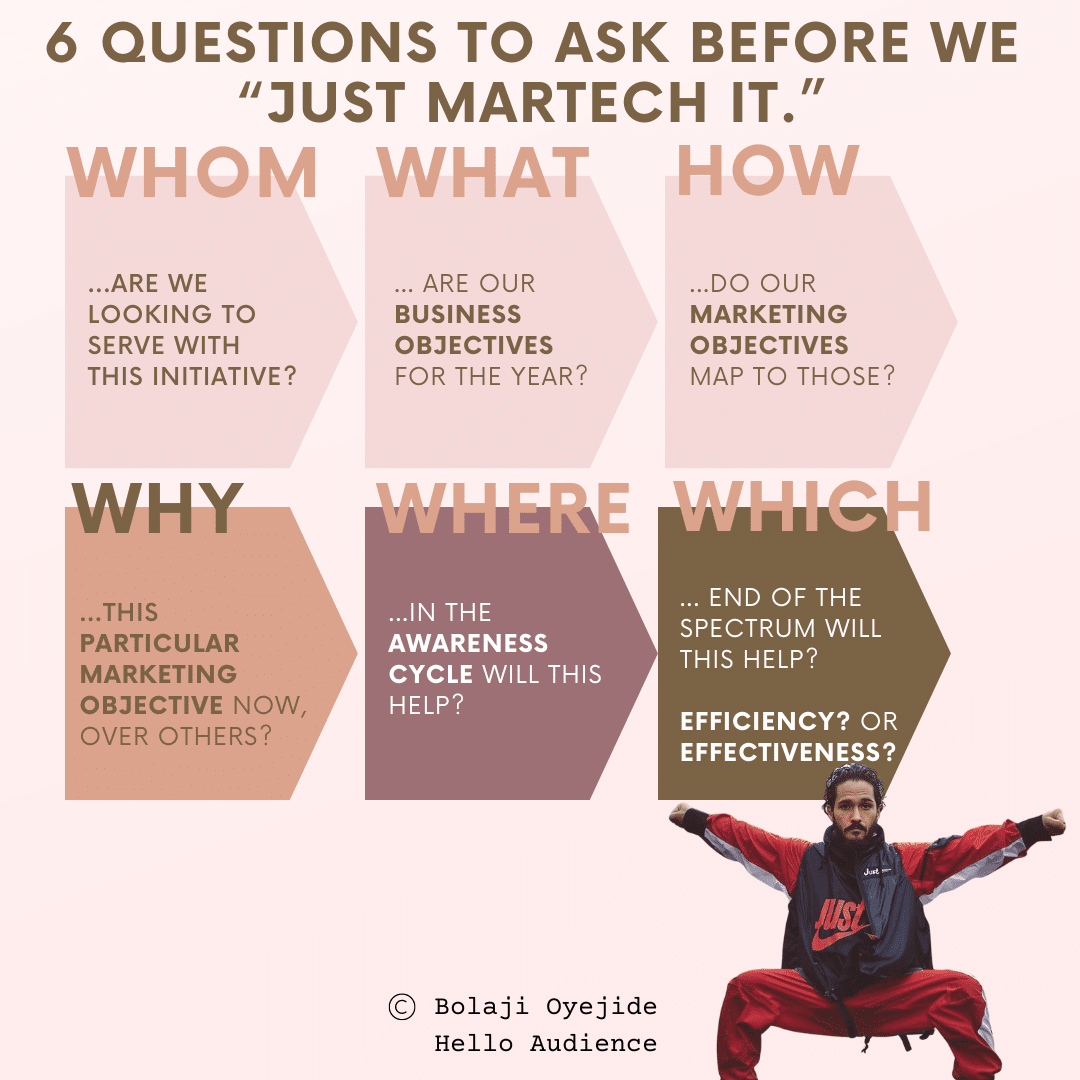The effectiveness crisis in B2B marketing: Why MOps must shift focus now
Here’s how MOps can balance the drive for efficiency with the need for marketing effectiveness, especially as AI tools proliferate.
In our zeal to harness the tech part of martech, the ops part of MOps and the automation part of marketing automation, MOps professionals have failed to accomplish the most important part of the equation — marketing.
B2B marketing is suffering from an effectiveness crisis, having chased efficiency gains for years. Effectiveness should be mastered and constantly invested in ahead of efficiency. Here’s why.
The evolution of martech: From automation to AI
As marketing technologists, we’ve lived through our fair share of technology explosions.
- The rise of cloud-based software.
- The rise of marketing automation.
- The rise of smart mobile devices.
- And now, the explosion of artificial intelligence in marketing.
Indeed, marketers use AI to brainstorm ideas, write copy, generate content, improve audience targeting, build landing pages, analyze data, parse text and find insights, customer intelligence and more.
But in our zeal to harness technology, operations and automation, we fail to accomplish marketing. Higher-ups want us to do more with less (efficiency). But does that mean they don’t care about us meeting the company’s marketing objectives (effectiveness)?
Technology is great at automation and efficiency. Much of the excitement about AI centers on the promise of increased productivity. But let’s not forget principles.
Marketing is:
- Entering the conversation already happening in the audience’s mind.
- Understanding their pains, fears, frustrations, anxieties, worries, hopes and aspirations.
- Establishing our brand as trusted and trustworthy advisors within the sphere of our expertise.
- Building a relationship before they ever have an explicit need for our offerings.
- Exhibiting our competency in this sphere.
- We’re not just the cheapest, nor just the ones with the most proximity who are in their path.
- We are really good at solving their urgent problems in this sphere.
- Creating a preference for our brand, even as we strive to be the best.
- Facilitating a frictionless buying process as possible for those who are interested.
Done correctly, marketing is personal, creative, intimate, empathetic and intuitive. It’s more listening than talking, showing than telling and more story than preaching.
That’s why we love good marketing but can’t stand sleazy, lazy or inconsiderate versions of it.
Dig deeper: How martech leaders must embrace AI for customer-centric marketing
The art and science of marketing

We’re all familiar with the five stages of product awareness:
- Unaware
- Problem aware
- Solution aware
- Product aware
- Fully aware
If you’ve worked in demand generation or interacted with them, you may have started to hear the terms “demand creation,” “demand capture” and “demand conversion.”
- Demand creation: Creating demand for your specific brand over other brands.
(Note: Demand creation does not mean manufacturing demand from scratch at a prospective client’s organization. Most of what manufacturers demand is internal.) - Demand capture: For prospective buyers seeking a solution, inviting them into a dialogue with your brand, typically via a lead capture form.
- Demand conversion: Moving prospective buyers through your sales process in a frictionless and efficient manner, so they can quickly and comfortably decide to choose your brand or move on.
A lot of our martech is focused on the last two:
- Demand capture (e.g., lead capture forms, campaign tracking, attribution, etc.)
- Demand conversion (e.g., CRM, lead routing, sales stage conversion rates, etc.)
When prospective buyers are in our system, the name of the game generally moves to efficiency. We generally know the most direct process to get people through and need to stick to it. There’s more science than art here.
But while they’re out there in the wild — which will be over 95% of our target audience — the name of the game has to be effectiveness. We generally don’t know the specific levers that get people through the journey, so we have to try lots of little experiments and scale the ones that work. There’s more art than science here.

AI will do more and more of the automation piece (efficiency), but it will take much longer to take over the marketing piece (effectiveness).
I get it. MOps teams are struggling under the sheer weight of:
- Demands from the business to increase efficiency.
- Demands from our marketing colleagues to integrate the latest freemium AI tools.
When cloud-based freemium software exploded years ago, the concept of “shadow IT” crept in. A myriad of almost invisible apps relied on by members of our broader team that we typically didn’t find out about until after the fact. With new free AI tools popping up weekly, “shadow AI” could become the new MOps headache. So, what should we do?
Do we try to incorporate it all, as the ad-hoc requests come in fast and furious? Do we say no to everything and keep a lid on only top-down approved apps? Here’s a middle ground to help you thread the needle.
Dig deeper: Simplifying your martech stack: From pipeline efficiency to brand affinity
6 questions to ask before we ‘just martech it’ for marketing
Meet every new request from marketing to incorporate a shiny new AI tool with these questions:

- Who are we looking to serve with this initiative?
- Total addressable market?
- Subscribers?
- Qualified Leads?
- Opportunities?
- Or purely an internal audience (e.g., reporting)?
- What are our business objectives for the year?
- How do our marketing objectives map to those?
- Why this particular marketing objective over the others?
- Where in the awareness cycle will this help?
- Which end of the marketing spectrum will this help? Effectiveness or efficiency?
We can ask these types of due diligence questions to push back on requests from our broader marketing colleagues, who are also under pressure to do more with less.
Sometimes, the due diligence hasn’t been done all the way upstream. We may need to reflect that back to them rather than simply being order takers for all requests.
As marketers, we get blown away by new solutions and overlook fundamental problems. The more marketers can obsess about the wants, needs, hopes, fears and frustrations of their ideal buyers, the more laser-focused their requests for MOps can be.
And the more MOps can obsess about the company’s true business and marketing objectives, the more you can help marketing increase its effectiveness first — and then, it’s efficiency second.
We can do more than ‘just martech it’
A MOps career specializing only in efficiency is already threatened by AI. More and more of what you do will be replaced by code. It’s the cart trying to lead the horse. But a MOps career built on marketing effectiveness first, then efficiency second? Now, that’s a rare breed.
We need to hold our broader marketing departments accountable. They should not inundate us with every shiny new tool, AI or otherwise. This allows us to participate in strategic conversations about marketing objectives and how to find the best martech solutions for the job.
Because the marketing piece is why most of us actually got into marketing.
Dig deeper: From efficiency to efficacy: 2024’s B2B marketing revolution
Opinions expressed in this article are those of the guest author and not necessarily MarTech. Staff authors are listed here.
Related stories
New on MarTech